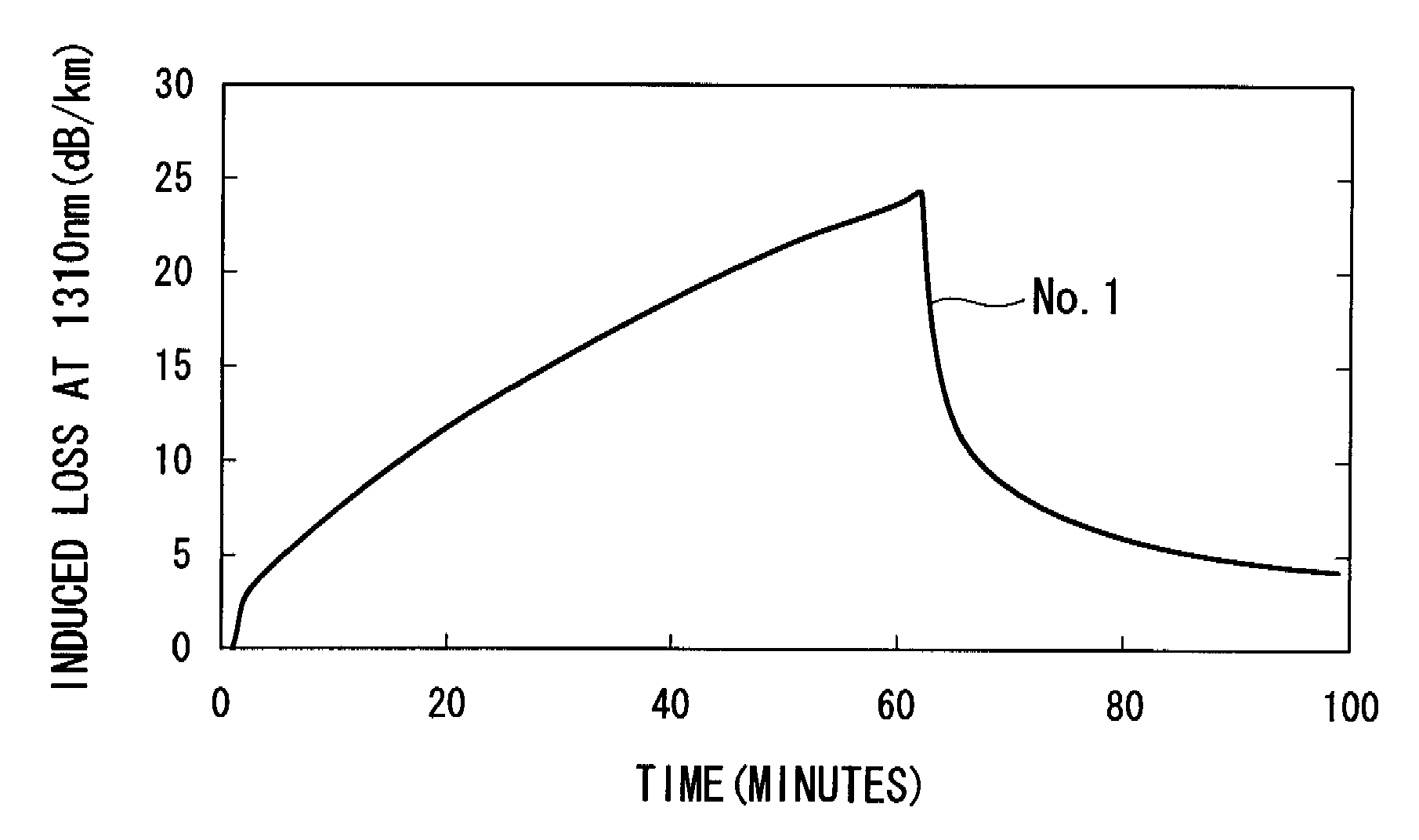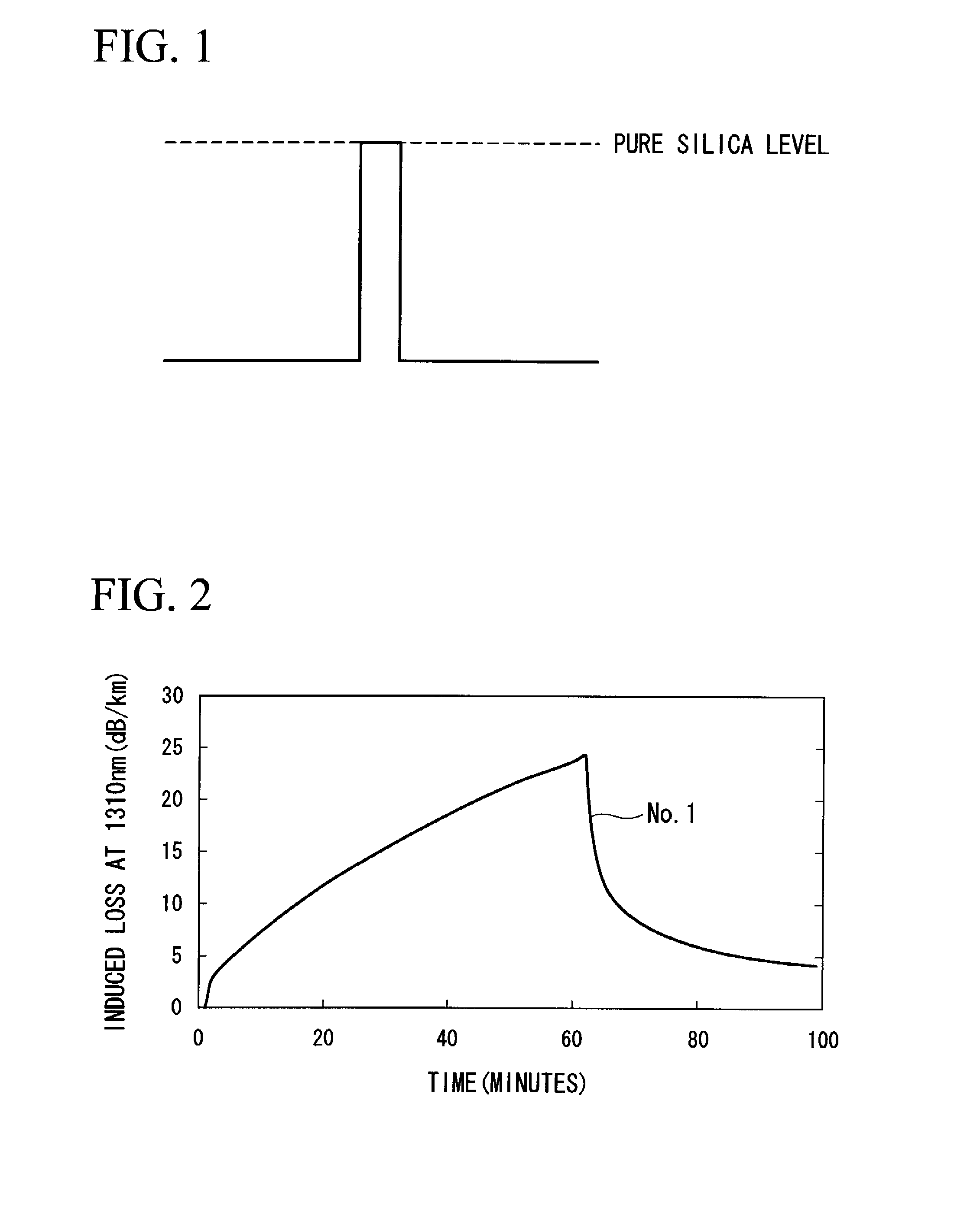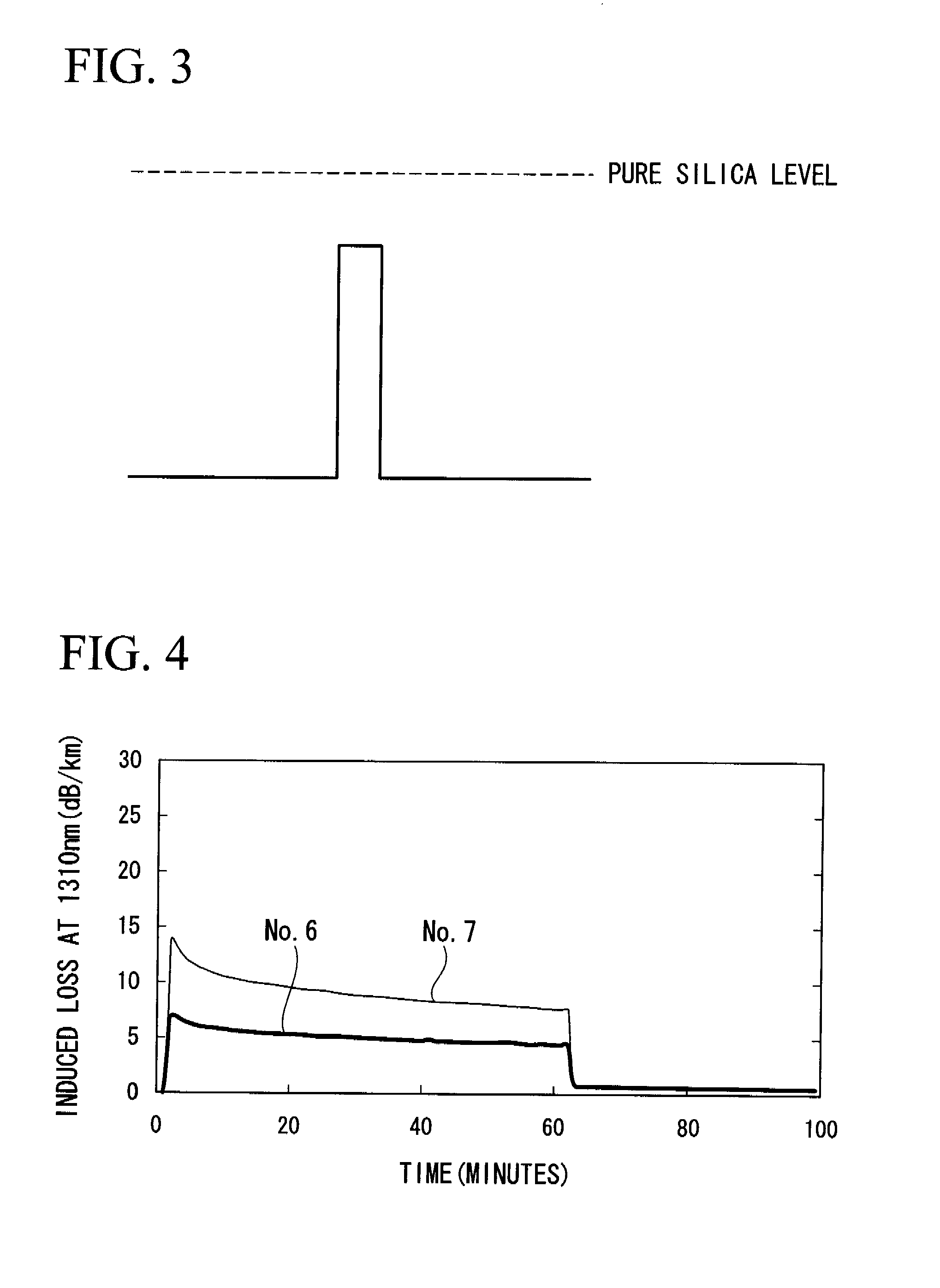Radiation resistant single-mode optical fiber and method of manufacturing thereof
a single-mode optical fiber and radiation-resistant technology, applied in the field of silicon glass optical fiber, can solve problems such as loss in the amount of transmitted light (induced loss)
- Summary
- Abstract
- Description
- Claims
- Application Information
AI Technical Summary
Benefits of technology
Problems solved by technology
Method used
Image
Examples
example 2
[0050]Silica soot was produced by a VAD method. The silica soot was dehydrated in a 1000° C. atmosphere of helium gas (4 liters) and chlorine gas (160 cc), following which fluorine was added in an atmosphere of helium gas (4 liters) and fluorine (10 cc), and the silica soot was sintered in a 1450° C. atmosphere. The resulting glass was then drawn and silica glass was applied to the outside vapor deposition so as to obtain a given cladding to core diameter ratio.
[0051]This was followed by dehydration in a 1000° C. atmosphere of helium gas (4 liters) and chlorine gas (160 cc), following which fluorine was added in an atmosphere of helium gas (4 liters) and fluorine (2.7 liters), and the silica soot was sintered at 1350° C. The outside vapor deposition method of fluorine doped silica glass was again carried out, yielding an optical fiber preform having a cladding to core diameter ratio (r2 / r1) of 14 and a core relative refractive index difference based on the refractive index for the c...
example 3
[0055]A silica soot was produced by a VAD method. This silica soot was dehydrated in a 1000° C. atmosphere of (4 liters) and chlorine gas (160 cc), then sintered in a 1300° C. atmosphere of helium gas (4 liters) to which 180 cc of SiF4 gas was added. The resulting glass was drawn, and the fluorine doped silica glass was applied to the outside vapor deposition.
[0056]This was followed by dehydration in a 1000° C. atmosphere of helium gas (4 liters) and chlorine gas (160 cc), and sintered in an atmosphere of helium gas (1 liter) and SiF4 gas (4 liters). Next, the outside vapor deposition method of silica glass was again carried out, yielding an optical fiber preform having a cladding to core diameter ratio (r2 / r1) of 14 and a core relative refractive index difference based on the refractive index for the cladding of 0.35%.
[0057]The optical fiber preform was drawn (spun) at a fiber drawing tension of 0.25 N and a fiber drawing speed of 100 m / min, then coated to a diameter of 250 μm with...
PUM
| Property | Measurement | Unit |
|---|---|---|
| bending diameter | aaaaa | aaaaa |
| bending diameter | aaaaa | aaaaa |
| cutoff wavelength | aaaaa | aaaaa |
Abstract
Description
Claims
Application Information
 Login to View More
Login to View More - R&D
- Intellectual Property
- Life Sciences
- Materials
- Tech Scout
- Unparalleled Data Quality
- Higher Quality Content
- 60% Fewer Hallucinations
Browse by: Latest US Patents, China's latest patents, Technical Efficacy Thesaurus, Application Domain, Technology Topic, Popular Technical Reports.
© 2025 PatSnap. All rights reserved.Legal|Privacy policy|Modern Slavery Act Transparency Statement|Sitemap|About US| Contact US: help@patsnap.com



